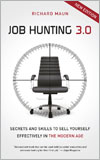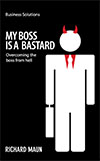better business blog
Tips and stories to add value to you and your organisation

How To Run A Business
I wonder that life is complicated, with bills to pay, smartphones to look after and family and friends to engage with. We have no blueprint and amble through our lives, largely making it up as we go along.
Perhaps we make it more complicated than it needs to be?
Take smartphones for instance. I have no idea how mine works. It’s basically one step down from magic. I push buttons and interesting things happen. I’m fairly sure I’m not using it to its potential and that when I’m not looking it quietly seethes at my ignorance and inability to fully maximise its RAM or ROM or REM. Maybe one of those doesn’t apply, but who’s counting?
Life is as complicated as we choose to make it and business is no different.
We can keep it simple and remain as effective as the biggest corporation. We can do what’s right and be as professional as the brightest MBA graduate.
What matters in business is how we think and what we do.
To run a business effectively we need a basic toolkit. What follows is based on my 15 years of business coaching, working with senior managers to develop their thinking and build their confidence, so that business blossoms.
We need…
1. A cashflow forecast.
2. A marketing plan.
3. A sales plan.
4. A to-do list.
That’s pretty much it, when you boil it down to a basic level. Surprisingly not many people would score four out of four here and have all the basics in place. How did you do?
A cashflow forecast tells us whether cash is increasing or decreasing. A profit and loss account tells us what our year end position will be, which assumes there will be enough cash slopping around to get us there. If we keep a close eye on cash then we dramatically increase our chances of making it to the end of the year.
A marketing plan tells us what makes us unique, special and different, what our message is to the world and how we are going to get our message out there. We can include a fancy SWOT analysis if we like, but if we don’t know what differentiates us from the competition then it’s just a pretty grid and has little value.
The marketing plan informs our sales plan. We know which areas of the market to focus on and when we meet potential customers we know what we need to tell them about our products and services. Our sales plan can list out all of our target customers so that we keep them firmly in sight.
Without a to-do list we are going to to-do nothing. In all the time management books I’ve read, a to-do list appears constantly as the single indispensable take-away tip. Our brain is excellent at sorting and prioritising, so it doesn’t matter if our list is a long one. As long as it’s on the list our tasks will eventually be resolved.
What I’d add to my 4-step business toolkit is paper. I love paper. It’s friendly and tactile and never needs an overnight Apple-upgrade. We can have a battery-free toolkit, which folds up and fits in a pocket. We can keep our business super simple.
Smartphones and technology have their place for many of us, but we need to lead them and not be lead by them. We can avoid over-complication.
Let’s have fun this week keeping business, and life, simple and making sure we all score four out of four!
Next week: Happy In The Middle
e-publishing
Click icon for details


recent posts
browse archive
books
Click cover to view details on Amazon

How to Keep Your Job
Brilliant ways to increase performance, stay employed and keep the money rolling in
Published 2011 Marshall Cavendish
208pp

Job Hunting 3.0
Secrets and skills to sell yourself effectively in the Modern Age
Published 2010 Marshall Cavendish
260pp

 RSS
RSS


